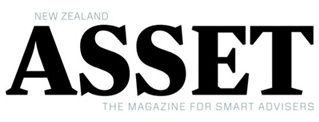Why smart advisers are focusing their attention on KiwiSaver

KiwiSaver will become the most significant part of an adviser’s business within the next 15 years.
That’s the prediction from Scott Alman, the managing director and founder of Consilium, who says as KiwiSaver balances rise to the equivalent of an investor’s annual salary, the demand for individual advice is likely to grow significantly.
“We’re at this real inflection point in New Zealand where KiwiSaver is mature and investors are starting to say, ‘My balance is at a point where this is serious, and my actions need to become more serious too'.
“Once a large amount of money is at stake, investors usually understand the value of paying for advice,” Alman says.
For these investors, another moment of truth may come when their KiwiSaver portfolio is making more money on average each year than the individual is contributing. At that point, it makes economic sense to look at the big picture – their total investments inside and outside KiwiSaver – and seek independent advice.
“The ‘magic’ of compounding returns and regular contributions will continue to lift these balances,” Alman says.
Consilium’s own KiwiSaver scheme, KiwiWRAP, has an average balance of $170,000 and every year we’re seeing larger and larger fund balances.
This year, a couple of million-dollar KiwiSaver accounts transferred in. And, as balances continue to grow, people will become more interested in the fees they pay and the returns they get. KiwiSaver is going to be an ever-increasing part of their financial wellbeing.
“Historically, New Zealanders have been relatively poor savers, and not everyone has the ability to put money away for a rainy day. But KiwiSaver will help them achieve this.
“Over time, they will end up with a healthy balance to use in their retirement, in addition to their other assets. That’s something a lot of people haven’t had in the past,” Alman says.
Big pool
Sixteen years after its inception, KiwiSaver is now attracting significant new money every year.
In the 12 months to 31 December 2023, total funds under management in KiwiSaver rose 18%, breaking through the $100 billion mark, according to the Financial Markets Authority. And while the average balance remains relatively modest, at around $29,000, this doesn’t tell the whole story.
For example, average balances are dragged down by a large number of noncontributing members. Some are making only minimal or sporadic contributions, and there has been a record number of hardship withdrawals over the past year.
Average balances also mask the fact that a growing number of people have very high KiwiSaver balances.
For example, Consilium's KiwiWRAP KiwiSaver Scheme has 440 members, with more than $75 million invested and an average investor balance of $170,000 - the highest of any KiwiSaver provider.
In Alman’s view, the KiwiWRAP model is the way of the future. And now is the time for advisers to think hard about how to restructure their businesses to include the fast-growing KiwiSaver market.
In Australia, where superannuation has been compulsory since 1992 and employer contributions are at 11%, two-thirds of the money advisers handle is superannuation funds.
Additionally, superannuation assets represent 145% of GDP in Australia. In New Zealand, the figure for KiwiSaver is only 37.3%.
Alman points out, however, that because of the different ways KiwiSaver and Australia’s superannuation schemes are taxed, New Zealand isn’t a long way behind in terms of contribution level, compared with the Australian scheme at the equivalent age and stage.
‘KiwiSaver is mature, and investors are starting to say, “My balance is at a point where this is serious, and my actions need to become more serious too’
— Scott Alman
Advice-driven platform
Consilium’s KiwiWRAP platform is entirely advice-driven. In fact, only advisers can access the platform on behalf of their clients.
As opposed to selecting a single fund, which is the typical KiwiSaver model, advisers and investors using KiwiWRAP can choose from more than 400 investment options to design and customise their individual KiwiSaver portfolios.
Increased transparency is another key feature of the scheme. Rather than the opaque fee structures often found with some traditional KiwiSaver funds, KiwiWRAP investors and advisers can see the cost of the scheme, the investments and the advice.
“Complete transparency is so important. Members should know exactly where their money is invested, who the managers are, their risk tolerance, their asset allocation and what fees they pay for administration, funds management and advice, ”Alman says.
It’s a far cry from the mass-market KiwiSaver model that has served the industry since July 2007, where investor choice is generally limited to selecting a provider and the level of risk they can tolerate.
And while some providers have started offering basic advice, it is rarely tailored to individual needs and may or may not be independent.
Alman believes the traditional KiwiSaver model has served New Zealand well up to this point. It was designed to be simple and portable and that was a really good way to kick off the scheme.
However, 16 years down the track, it needs to move to the next stage – the incorporation of advice, he says.
KiwiWRAP KiwiSaver Scheme is designed for investors with a balance of $50,000 and above and is only available through an accredited adviser. You can find a list of accredited advisers at www.kiwiwrap.co.nz/find-an-adviser or contact Consilium about becoming accredited.
Originally published on ASSET Autumn 24: KiwiSaver members need you